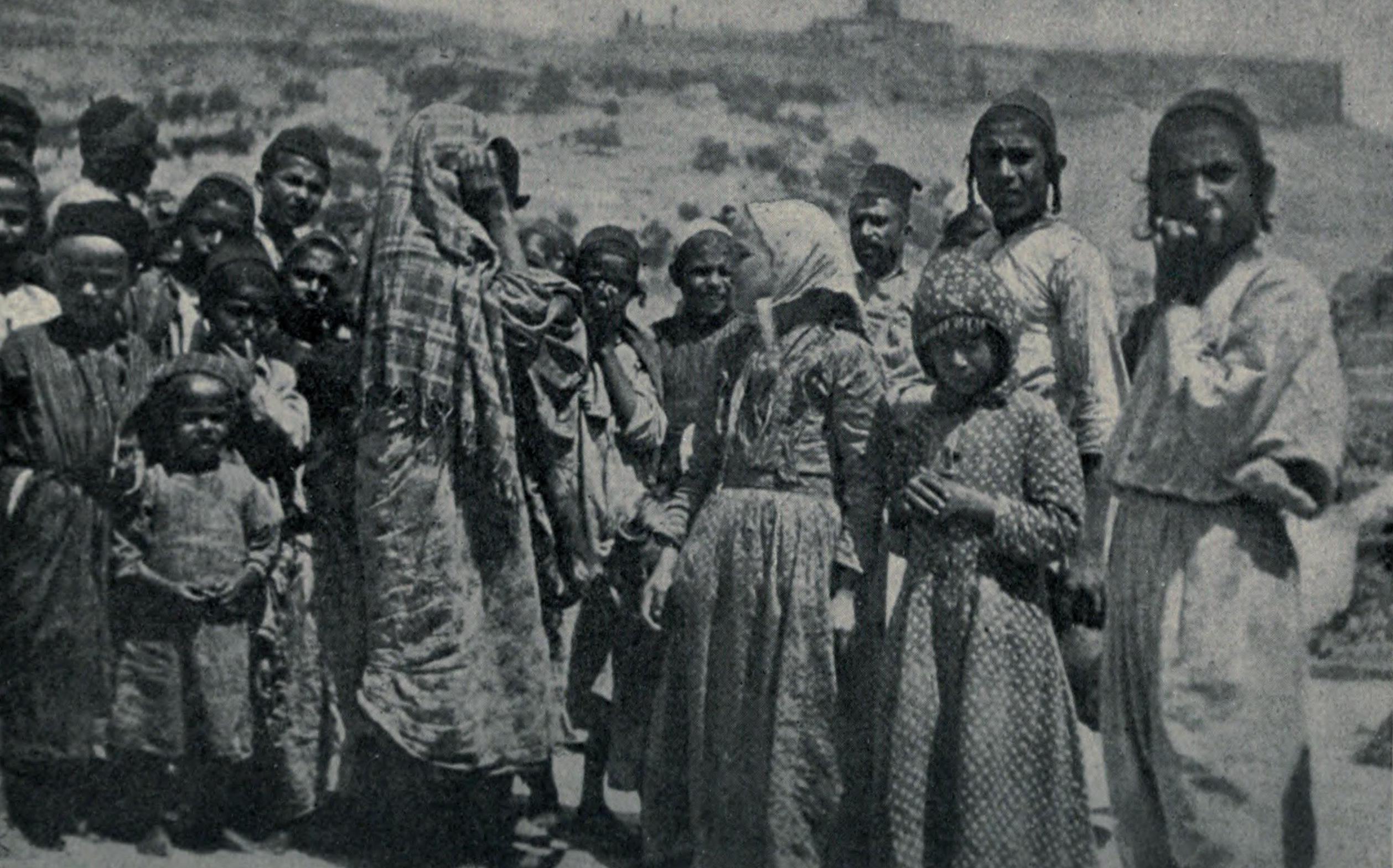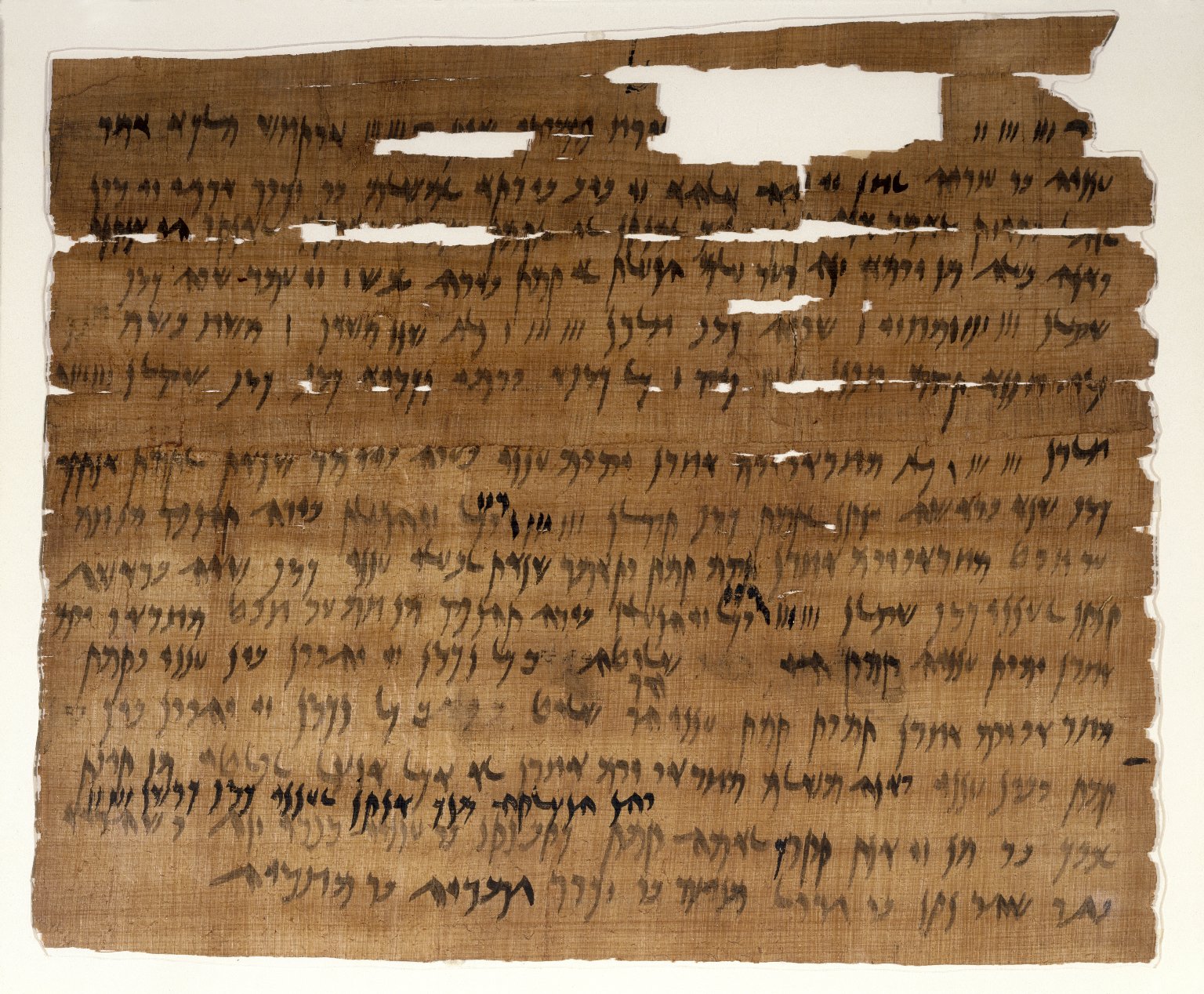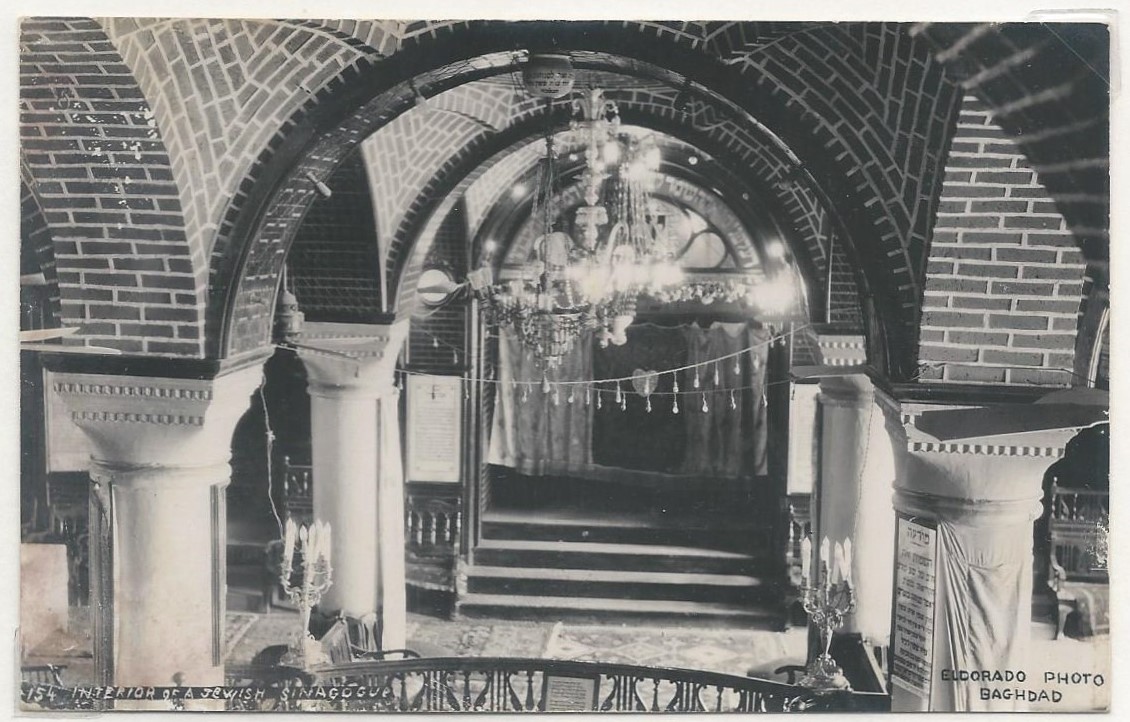|
Development Towns
Development towns ( he, עיירת פיתוח, ''Ayarat Pitu'ah'') were new settlements built in Israel during the 1950s in order to provide permanent housing for a large influx of Jewish immigrants from Arab countries, Holocaust survivors from Europe and other new immigrants (Olim), who arrived to the newly established State of Israel. The towns were designed to expand the population of the country's peripheral areas while easing pressure on the crowded centre. Most of them were built in the Galilee in the north of Israel, and in the northern Negev desert in the south. In addition to the new towns, Jerusalem was also given development town status in the 1960s. In the context of the Arab–Israeli conflict, Jewish refugees from Arab states were initially resettled in refugee camps, known variously as immigrant camps, ''ma'abarot'' and development towns. Development towns were subsequently considered by some to be places of relegation and marginalisation. Background At the en ... [...More Info...] [...Related Items...] OR: [Wikipedia] [Google] [Baidu] |
Mitzpe 1957
Mitzpe, a Hebrew language, Hebrew word meaning ''lookout'', may refer to the following places in Israel: *Mitzpe Aviv *Mitzpe Dani *Mitzpe Dona Gracia *Mitzpe Eshtemoa *Mitzpe Hagit *Mitzpe Hila *Mitzpe Ilan *Mitzpe Kramim *Mitzpe Netofa *Mitzpe Ramon *Mitzpe Shalem *Mitzpe Yair *Mitzpe Yeriho *Mitzpe Yosef {{geodis ... [...More Info...] [...Related Items...] OR: [Wikipedia] [Google] [Baidu] |
Beit She'an
Beit She'an ( he, בֵּית שְׁאָן '), also Beth-shean, formerly Beisan ( ar, بيسان ), is a town in the Northern District (Israel), Northern District of Israel. The town lies at the Beit She'an Valley about 120 m (394 feet) below sea level. Beit She'an is believed to be one of the oldest cities in the region. It has played an important role in history due to its geographical location at the junction of the Jordan River, Jordan River Valley and the Jezreel Valley. The town's ancient tell contains remains beginning in the Chalcolithic, Chalcolithic period. It served as an New Kingdom of Egypt, Egyptian administrative center during the Late Bronze Age. During the Hellenistic period, the settlement was known as Scythopolis (Ancient Greek: ''Σκυθόπολις''). After the region came under Roman Empire, Roman rule, Scythopolis gained imperial free status and was the leading city of the Decapolis. Later, under Byzantine rule, it served as the capital of Palaestina Sec ... [...More Info...] [...Related Items...] OR: [Wikipedia] [Google] [Baidu] |
Syrian Jews
Syrian Jews ( he, יהודי סוריה ''Yehudey Surya'', ar, الْيَهُود السُّورِيُّون ''al-Yahūd as-Sūriyyūn'', colloquially called SYs in the United States) are Jews who lived in the region of the modern state of Syria, and their descendants born outside Syria. Syrian Jews derive their origin from two groups: from the Jews who inhabited the region of today's Syria from ancient times (known as Musta'arabi Jews, and sometimes classified as Mizrahi Jews, a generic term for the Jews with an extended history in Western Asia or North Africa); and from the Sephardi Jews (referring to Jews with an extended history in the Iberian Peninsula, i.e. Spain and Portugal) who fled to Syria after the Alhambra Decree forced the expulsion of the Jews from Spain in 1492. There were large communities in Aleppo ("Halabi Jews", Aleppo is ''Halab'' in Arabic) and Damascus ("Shami Jews") for centuries, and a smaller community in Qamishli on the Turkish border near Nusaybin. In ... [...More Info...] [...Related Items...] OR: [Wikipedia] [Google] [Baidu] |
Yemenite Jews
Yemenite Jews or Yemeni Jews or Teimanim (from ''Yehudei Teman''; ar, اليهود اليمنيون) are those Jews who live, or once lived, in Yemen, and their descendants maintaining their customs. Between June 1949 and September 1950, the overwhelming majority of Yemen's Jewish population immigrated to Israel in Operation Magic Carpet. After several waves of persecution throughout Yemen, the vast majority of Yemenite Jews now live in Israel, while smaller communities live in the United States and elsewhere. Only a handful remain in Yemen. The few remaining Jews experience intense, and at times violent, anti-Semitism on a daily basis. Yemenite Jews have a unique religious tradition that distinguishes them from Ashkenazi Jews, Sephardi Jews, and other Jewish groups. They have been described as "the most Jewish of all Jews" and "the ones who have preserved the Hebrew language the best". Yemenite Jews fall within the "Mizrahi" (eastern) category of Jews, though they differ ... [...More Info...] [...Related Items...] OR: [Wikipedia] [Google] [Baidu] |
History Of The Jews In Libya
The history of the Jews in Libya stretches back to the 3rd century BCE, when Cyrenaica was under Greek rule. The Jewish population of Libya, a part of the Sephardi-Maghrebi Jewish community continued to populate the area continuously until the modern times. During World War II, Libya's Jewish population was subjected to anti-semitic laws by the Fascist Italian regime and deportations by Nazi German troops.Fendel, Hillel:New Middle East at a Glance-Leader by Leader: Part II Retrieved March 29, 2011. After the war, anti-Jewish violence caused many Jews to leave the country, principally for Israel, though significant numbers moved to Italy and North America. Under Colonel Muammar Gaddafi, who ruled the country from 1969 to 2011, the situation deteriorated further, eventually leading to the emigration of the remaining Jewish population. The last Jew in Libya, 80-year-old Rina Debach, left the country in 2003. Ancient history The oldest trace of a Jewish existence in Libya appears ... [...More Info...] [...Related Items...] OR: [Wikipedia] [Google] [Baidu] |
History Of The Jews In Egypt
Egyptian Jews constitute both one of the oldest and youngest Jewish communities in the world. The historic core of the Jewish community in Egypt consisted mainly of Egyptian Arabic speaking Rabbanites and Karaites. Though Egypt had its own community of Egyptian Jews, after the Jewish expulsion from Spain more Sephardi and Karaite Jews began to migrate to Egypt, and then their numbers increased significantly with the growth of trading prospects after the opening of the Suez Canal in 1869. As a result, Jews from many territories of the Ottoman Empire as well as Italy and Greece started to settle in the main cities of Egypt, where they thrived. The Ashkenazi community, mainly confined to Cairo's Darb al-Barabira quarter, began to arrive in the aftermath of the waves of pogroms that hit Europe in the latter part of the 19th century. In the 1950s, Egypt began to expel its Jewish population (estimated at between 75,000 and 80,000 in 1948), also sequestering Jewish-owned property at t ... [...More Info...] [...Related Items...] OR: [Wikipedia] [Google] [Baidu] |
Persian Jews
Persian Jews or Iranian Jews ( fa, یهودیان ایرانی, ''yahudiān-e-Irāni''; he, יהודים פרסים ''Yəhūdīm Parsīm'') are the descendants of Jews who were historically associated with the Persian Empire, whose successor state is Iran. The biblical books of Esther, Isaiah, Daniel, Ezra, and Nehemiah contain references to the lives and experiences of Jews who lived in Persia. Dating back to biblical times, Iranian Jews constitute one of the world's oldest and most historically significant Jewish communities. Jews have had a continuous presence in Iran since the time of Cyrus the Great of the Achaemenid Empire. Cyrus invaded Babylon and freed the Jews from the Babylonian captivity. Today, the vast majority of Persian Jews live in Israel and the United States, especially in Los Angeles, Beverly Hills, and on the North Shore of Long Island. There are smaller Persian Jewish communities in Baltimore, Maryland and the Twin Cities. According to the lat ... [...More Info...] [...Related Items...] OR: [Wikipedia] [Google] [Baidu] |
History Of The Jews In Iraq
The history of the Jews in Iraq ( he, יְהוּדִים בָּבְלִים, ', ; ar, اليهود العراقيون, ) is documented from the time of the Babylonian captivity c. 586 BC. Iraqi Jews constitute one of the world's oldest and most historically significant Jewish communities. The Jewish community of what is termed in Jewish sources "Babylon" or "Babylonia" included Ezra the scribe, whose return to Judea in the late 6th century BCE is associated with significant changes in Jewish ritual observance and the rebuilding of the Temple in Jerusalem. The Babylonian Talmud was compiled in "Babylonia", identified with modern Iraq. From the biblical Babylonian period to the rise of the Islamic caliphate, the Jewish community of "Babylon" thrived as the center of Jewish learning. The Mongol invasion and Islamic discrimination in the Middle Ages led to its decline. Under the Ottoman Empire, the Jews of Iraq fared better. The community established modern schools in the second ... [...More Info...] [...Related Items...] OR: [Wikipedia] [Google] [Baidu] |
Moroccan Jews
Moroccan Jews ( ar, اليهود المغاربة, al-Yahūd al-Maghāriba he, יהודים מרוקאים, Yehudim Maroka'im) are Jews who live in or are from Morocco. Moroccan Jews constitute an ancient community dating to Roman times. Jews began immigrating to the region as early as 70 CE. They were later met by a second wave of migrants from the Iberian peninsula in the period which immediately preceded and followed the issuing of the 1492 Alhambra Decree, when Jews were expelled from Spain, and soon afterward, from Portugal. This second wave of immigrants changed Moroccan Jewry, which largely embraced the Andalusian Sephardic liturgy, to switch to a mostly Sephardic identity. The immigration of Moroccan Jews to Israel has occurred throughout the centuries of Jewish history. Moroccan Jews built the first self-made neighborhood outside the walls of Jerusalem (Mahane Israel) in 1867, as well as the first modern neighborhoods in Tel Aviv, Haifa and Tiberias. At its peak in ... [...More Info...] [...Related Items...] OR: [Wikipedia] [Google] [Baidu] |
Jewish Exodus From Arab Lands
The Jewish exodus from the Muslim world was the departure, flight, expulsion, evacuation Evacuation or Evacuate may refer to: * Casualty evacuation (CASEVAC), patient evacuation in combat situations * Casualty movement, the procedure for moving a casualty from its initial location to an ambulance * Emergency evacuation, removal of per ... and migration of around 900,000 Jews from Arab countries and Iran, mainly from 1948 to the early 1970s, though with one final Exodus of Iranian Jews, exodus from Iran in 1979–80 following the Iranian Revolution. An estimated 650,000 of the departees settled in Israel. A number of small-scale Jewish migrations began in many Middle Eastern countries early in the 20th century with the only substantial aliyah (immigration to the area today known as Israel) coming from Yemen and Syria. Few Jews from Muslim countries immigrated during the period of Mandatory Palestine. Prior to the Israeli Declaration of Independence, creation of Israel in 1948 ... [...More Info...] [...Related Items...] OR: [Wikipedia] [Google] [Baidu] |
Beit Shemesh
Beit Shemesh ( he, בֵּית שֶׁמֶשׁ ) is a city located approximately west of Jerusalem in Israel's Jerusalem District, with a population of in . History Tel Beit Shemesh The small archaeological tell northeast of the modern city was identified in the late 1830s as Biblical Beth Shemesh – it was known as Ain Shams – by Edward Robinson. The tel was excavated in numerous phases during the 20th century. Early development town years On 6 December 1950, the Hartuv displaced persons camp " Ma'abarat Har-Tuv" was established on the site of the current-day Moshav Naham. The first inhabitants were Jewish Bulgarian immigrants. They were joined by more Jewish immigrants from Bulgaria, Iran, Iraq, Romania, Morocco and Kurdistan. In 1952 the first permanent houses were built in Beit Shemesh. Prior to 1948 the Ramat Beit Shemesh neighborhood area was the site belonging to the Arab village Bayt Nattif. This village was built on remnants of an ancient Judean town, with vari ... [...More Info...] [...Related Items...] OR: [Wikipedia] [Google] [Baidu] |
Nahariya Maabara
Nahariya ( he, נַהֲרִיָּה, ar, نهاريا) is the northernmost coastal city in Israel. In it had a population of . Etymology Nahariya takes its name from the stream of Ga'aton (river is ''nahar'' in Hebrew), which bisects it. History Early Bronze Age The ruins of a 3,400-year-old Bronze Age citadel were found in the coastal city of Nahariya near the beach on Balfour Street, at a site known to archaeologists as ''Khirbet Kabarsa''. The citadel was an administrative center serving the mariners who sailed along the Mediterranean coast. There is evidence of commercial and cultural relations with Cyprus and the rest of the Mediterranean region. The fortress was destroyed four times by conflagration and rebuilt each time. Byzantine period A church from the Byzantine period, dedicated to St. Lazarus, was excavated in the 1970s. It was destroyed by fire, probably at the time of the Persian invasion in 614. British Mandate of Palestine In 1934, work began to found Nahar ... [...More Info...] [...Related Items...] OR: [Wikipedia] [Google] [Baidu] |

._Beisan_mound_LOC_matpc.17062.jpg)








